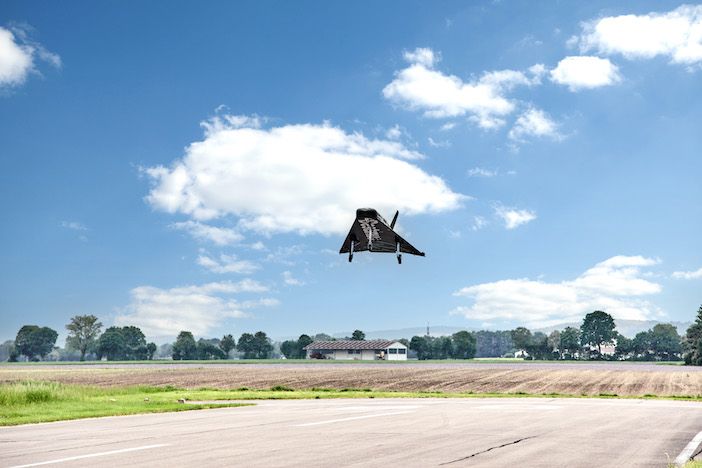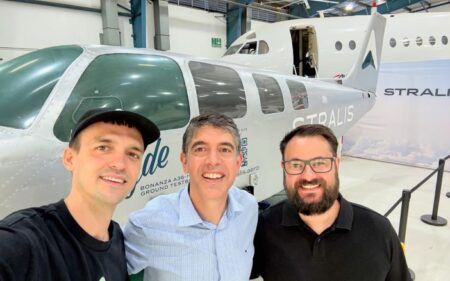European hypersonic passenger aircraft developer Destinus has flown a prototype equipped with hydrogen-fueled afterburners for the first time.
Destinus was founded in 2021 and aims to develop two hydrogen-powered passenger aircraft capable of traveling at hypersonic speeds. Its first aircraft will be capable of carrying between 20 to 100 passengers up to 7,500km (4,700 miles) and is planned to enter service by the end of this decade.
The Switzerland-based company, which also has sites in Spain, Germany and France has so far built two unmanned subscale prototypes Jungfrau (Destinus-1) and Eiger (Destinus-2) to trial designs and systems for future hypersonic aircraft.
The hydrogen afterburners were fitted to Jungfrau and flown for the first time last week from an airport near Munich, Germany.
Several flights were conducted with multiple firings of the hydrogen-fueled afterburner, with Jungfrau reaching speeds of around 250km/h (155mph) to demonstrate the functionality and efficiency of the afterburners.
Destinus halied the flight as a “huge step forward in the development of advanced hydrogen-powered propulsion systems for supersonic flight”.
Mikhail Kokorich, founder and CEO of Destinus said, “The successful flight with hydrogen afterburners demonstrates the potential for future high-performance propulsion systems that are highly efficient and reduce carbon emissions as part of Destinus’ goal to develop hypersonic aircraft powered by hydrogen.”
The afterburner was designed in-house, produced with additive manufacturing, and ground tested at Destinus’ propulsion test site in Payerne, Switzerland.
An afterburner generates more thrust in a turbojet engine by injecting additional fuel, in this case, hydrogen, into the turbine exhaust stream. The increased thrust generated by afterburners enables aircraft to achieve higher speeds and climb rates and they are usually used in fighter jets to achieve supersonic speeds.
Destinus said that its hydrogen afterburner’s design is similar to a ramjet’s combustion chamber, making this test a crucial step toward developing a hydrogen ramjet. The company intends to use a liquid hydrogen-fueled ramjet to accelerate its aircraft to hypersonic speeds.
Engineers at Destinus are working on the company’s third prototype, Destinus-3 to be the world’s first supersonic hydrogen aircraft. The company plans to reveal Destinus-3 at this month’s Paris Airshow and to fly the aircraft for the first time in 2024.
For more on the companies around the world developing hypersonic aircraft read our feature article “Fast Forward: The companies racing to make a hypersonic aircraft”.





